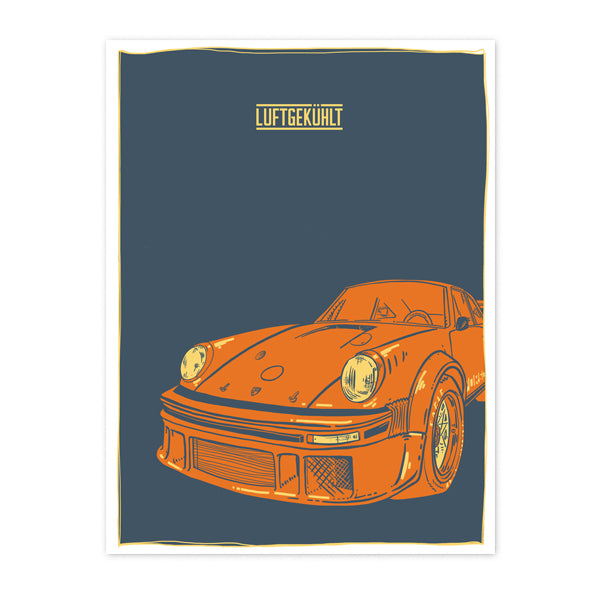Seinfeld's Monster 934
The Porsche 934 was the middle child of the factory 911 racing efforts in the 1970s. On one side was its big brother, the all-conquering Group 5 Porsche 935 silhouette racer. That car’s list of accomplishments was staggering: six overall wins at the 12 Hours of Sebring, six overall wins at the 24 hours of Daytona, IMSA championships, FIA championships, and, of course, its amazing overall win at the 24 Hours of Le Mans in 1979 in Kremer K3 form.
On the other side was the little brother that wouldn’t go away, the last of the normally aspirated 911 racecars, the snarling 911 RSR, which also crushed the competition with three overall wins at the 24 Hours of Daytona, three overall wins at the 12 Hours of Sebring, plus IMSA and FIA championships.


With those two cars around you, it’s not hard to understand why the 934 got lost in the crowded history of Porsche motor racing. To add insult to injury, the only time a 934 was credited with an overall win at one of the Triple Crown Endurance races was in 1983 at the 12 Hours of Sebring, and that was done by a 935 dressed down to fit into the 934 class. Ouch. Thanks big brother!

So where does that leave the overlooked middle kid? The 934, also called the RSR Turbo, was built for Group 4 racing and debuted in 1976 alongside its Group 5 brother, the 935. It was homologated by the sale of the production 930 road car, and was the racecar that bore the closest resemblance with its original headlights, bumpers, door trim, and even electric, glass windows. In fact, aside from the removal of the rear seats, some trim and soundproofing material, and the addition of an aluminum roll cage and front strut X-brace, the 934 could almost pass for a stripped-out road car.
Gone were the days of the 911 lightweight specials like the RS and RSR. New rules required a rather portly minimum weight of 2470 lb (1120 kg) without fuel. With a fuel tank capacity of 26.4 gallons (120 liters), the 934 was a heavy car, so Porsche set about making it fast.
Racing modifications were spearheaded by Norbert Singer’s protégée, Wolfgang Berger, and comprised a bigger turbo attached to the 930’s 3.0L flat-six engine, larger 16” wheels and tires, additional fender flares and the 934’s distinctive front air dam that housed radiators for two air-to-water intercoolers. Massive, radically vented disc brakes and robustly finned aluminum calipers were borrowed from the all-conquering 917, all of which barely fit inside the new BBS wheels. The suspension remained largely stock 930, but with ball joints and hard nylon bushings replacing rubber. Coil springs were added to the torsion bar suspension, as well as anti-roll bars front and rear.

Using the 930’s Bosch K-Jetronic injection (the first racecar to use the system), contactless ignition, 6.5:1 compression ratio and boost set at 1.4 bar (20psi), the single turbo 930/71 engine started 1976 with 485hp at 7000rpm, but would eventually rise to over 550hp in 1977.
While the factory run 935s went off to fight in World Championship events, the 934 came out swinging in the GT class wholly represented by privateer teams. The ready-to-race price of admission from Porsche was 108,000 Deutschmarks (about $43000 US). California Porsche dealer, Vasek Polak, would buy five of the original production run of 30 cars.
In its first year of competition the 934 would take both the Trans-Am championship and the European GT Championship with drivers including George Follmer, Hurley Haywood, Al Holbert, Toine Hezemans, Bob Wollek, Derek Bell, Klaus Ludwig, and Danny Ongais.
The American racing organization, IMSA, was reticent to permit turbocharged cars in 1976, but realized they missed the boat when they saw the popularity of the SCCA Trans-Am series. So, they created a special set of rules in 1977 that would create one of the most unusual and rare 911 racecars. Basically, the 934 was about to put on its big brother’s pants.

Originally it was Porsche’s intention that the Group 4 car could be converted into a respectable Group 5 car with the removal of ballast, swapping of the rear wing, and fitting bigger, wider wheels and tires in their respective fender flares. So, when IMSA allowed bigger rear wheels and a larger rear wing, it wasn’t a difficult task. The K-Jetronic fuel injection system was also replaced with the more robust mechanical Bosch plunger-type fuel injection. The result was a more drivable car with almost 590hp.
The addition of Group 5 parts essentially created a hybrid of the 934 and 935, which would become known as the 934/5, or 934 ½ . Only ten examples were constructed, with nine going to the US and one staying in Europe. Peter Gregg and his Brumos 934/5 would subsequently claim the 1977 Trans-Am championship with eight wins.
As the rules continued to change, many 934 and 934/5 cars would be converted into full 935 spec later in their careers, and so the 934 began to fade from history. With slant noses being added, big wings and twin turbos, the 934 had completely lost its identity by the mid-1980s. Only recently have these brilliant cars been stripped of their borrowed bodywork and restored to their original, unique configurations.
To cap off its period race history, the 934 had some glorious moments at the 24 Hours of Le Mans, with class wins in 1977 and 1981. But the highlight was when the all-Swiss Lubrifilm Racing Team took the 1979 Le Mans GT class win, finishing a magnificent fourth overall behind three 935s. Good job little brother, good job.
Story: John Ficarra
Photos: Zach James Todd and the Canepa Archives




